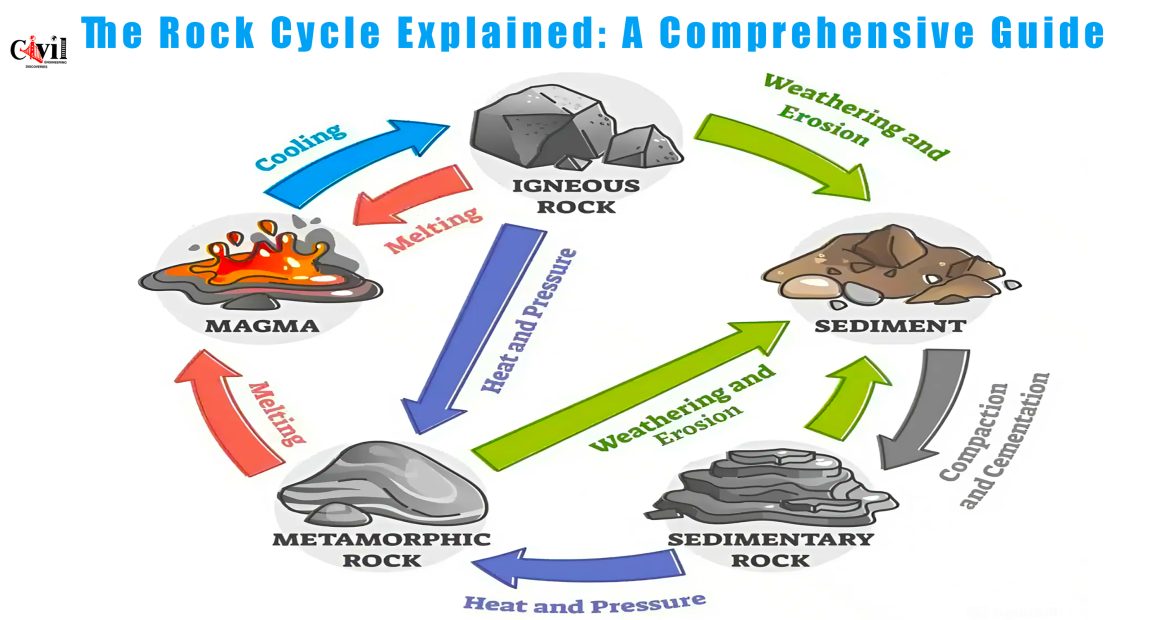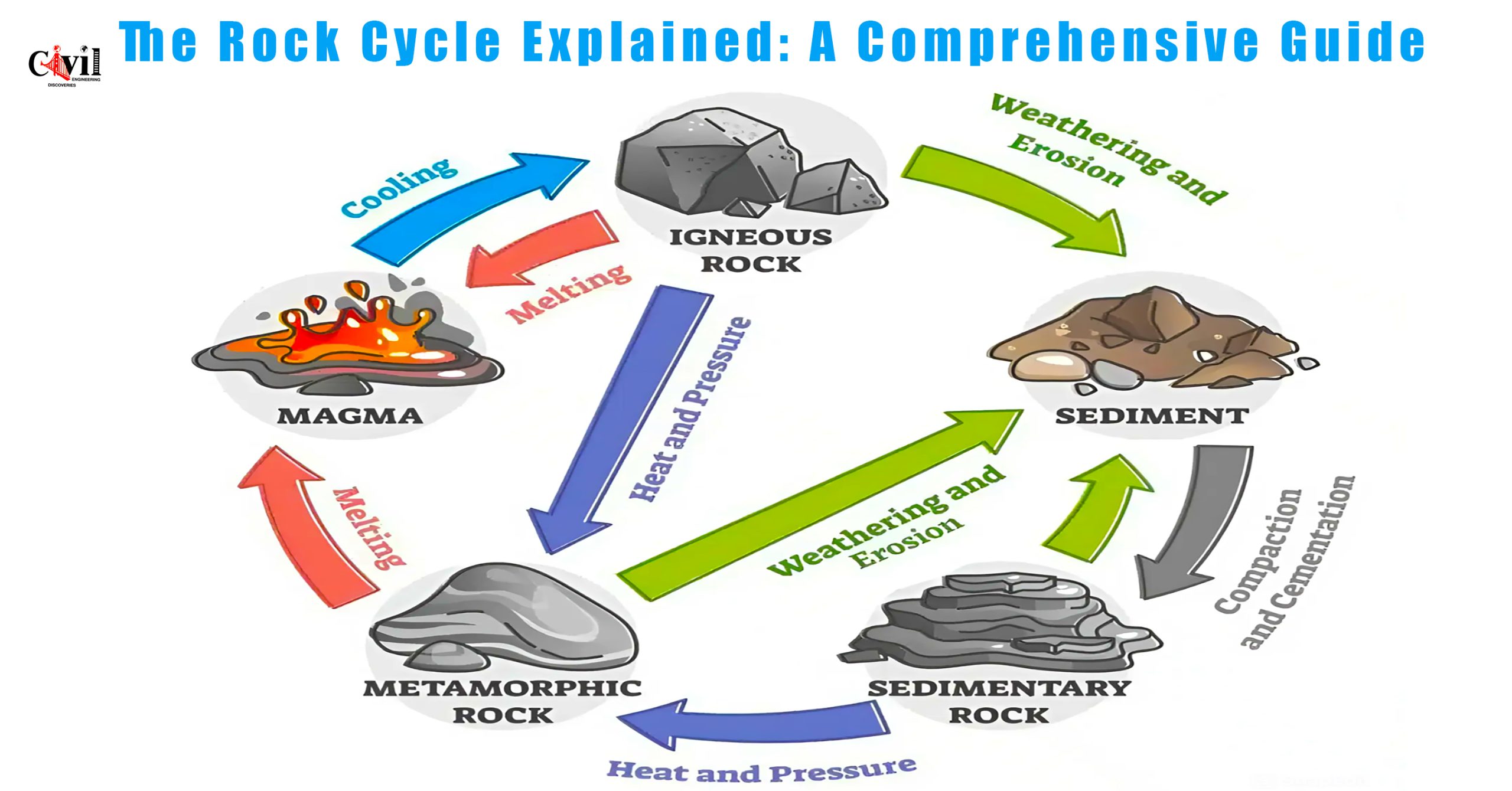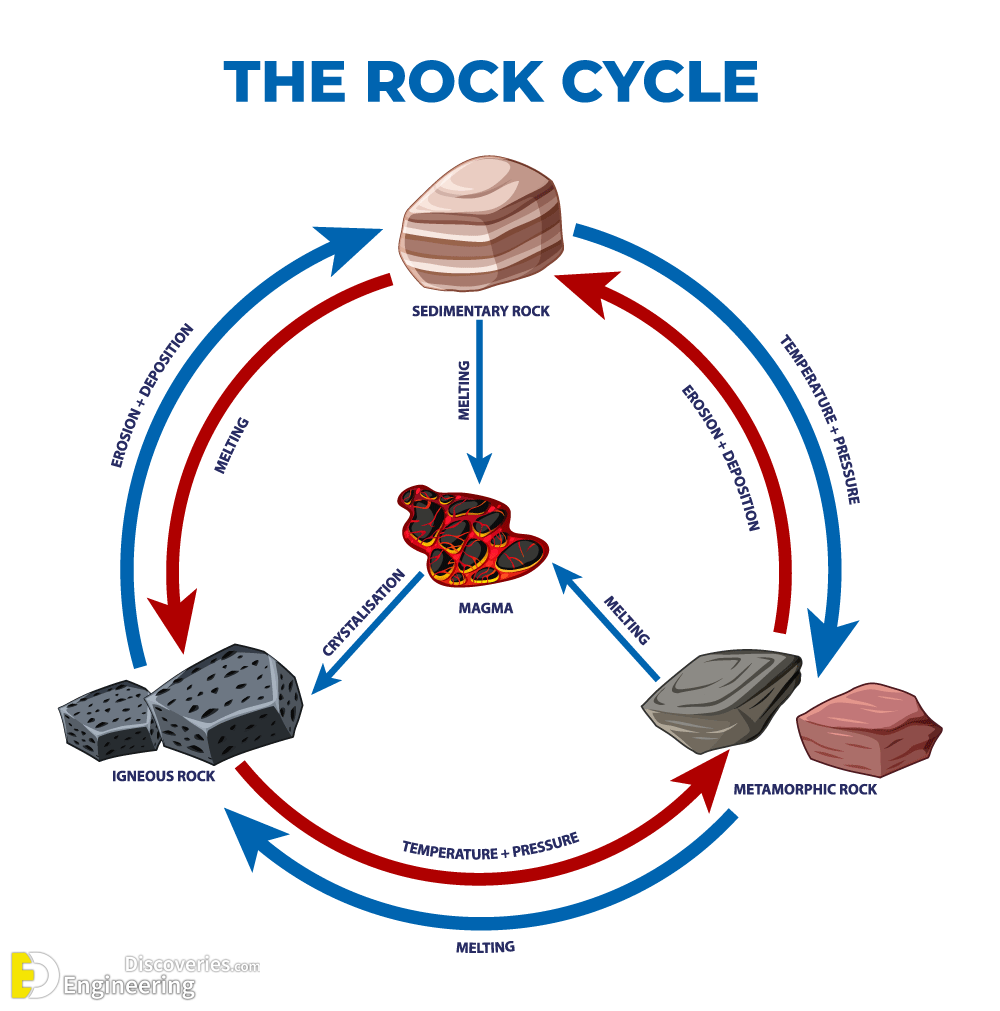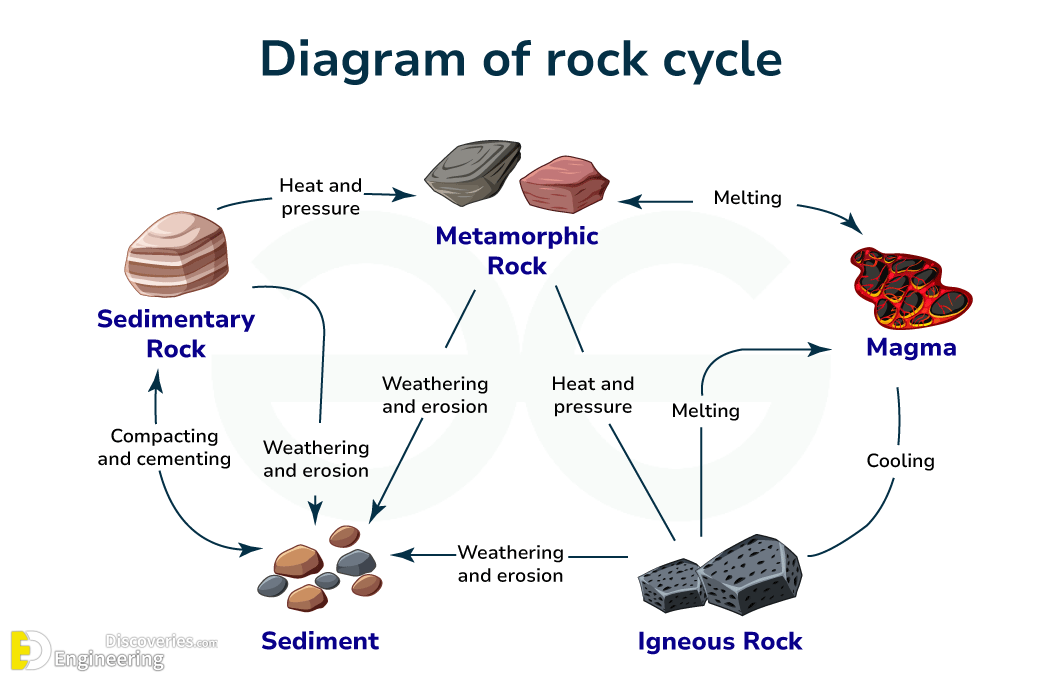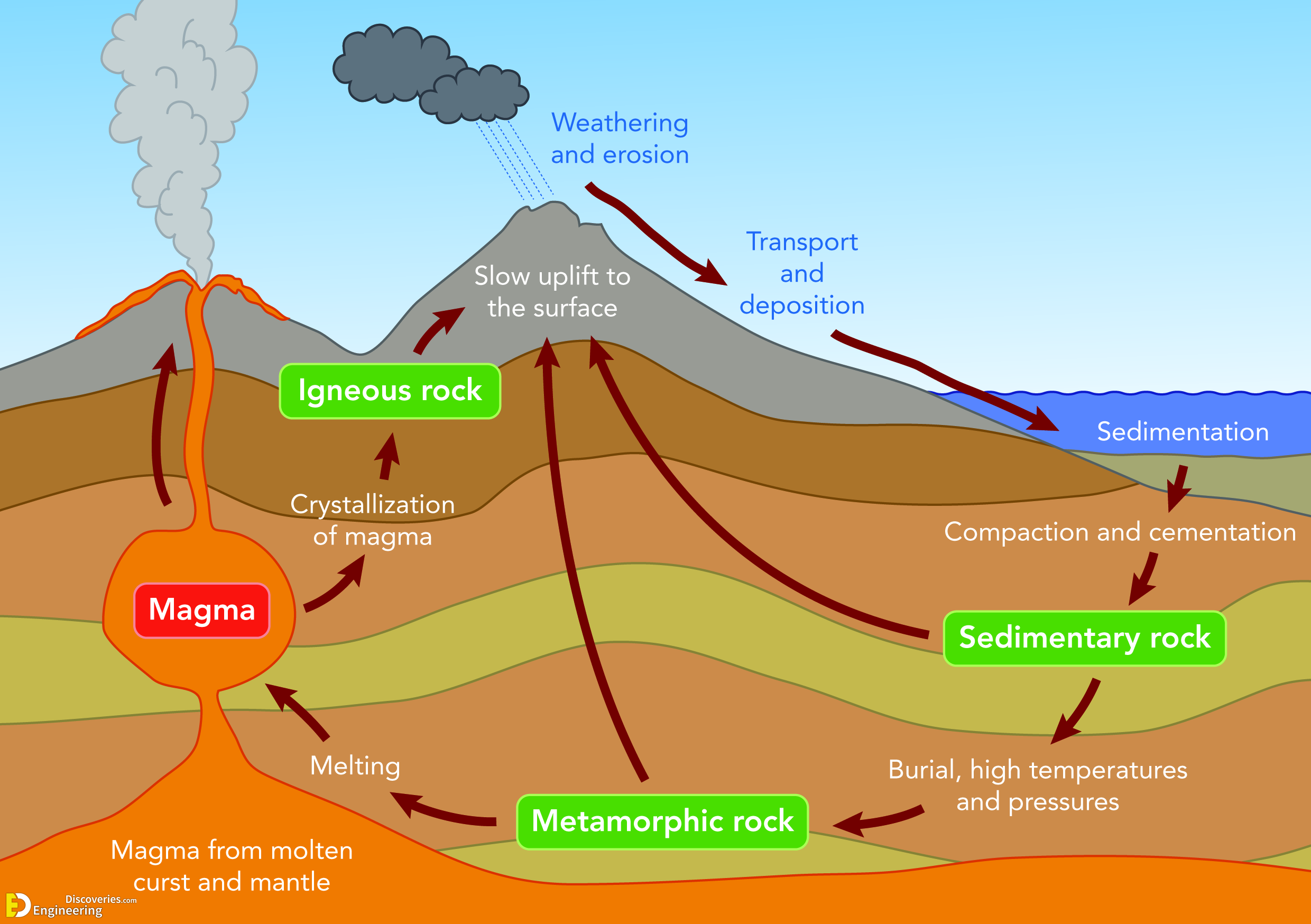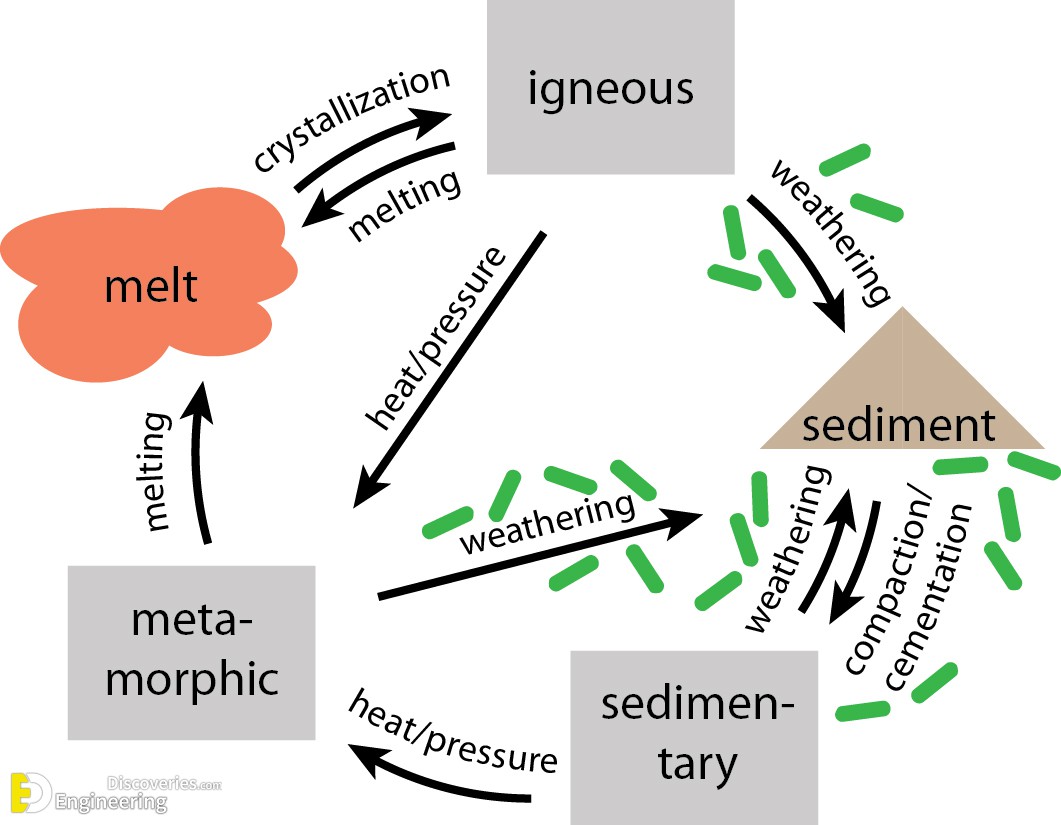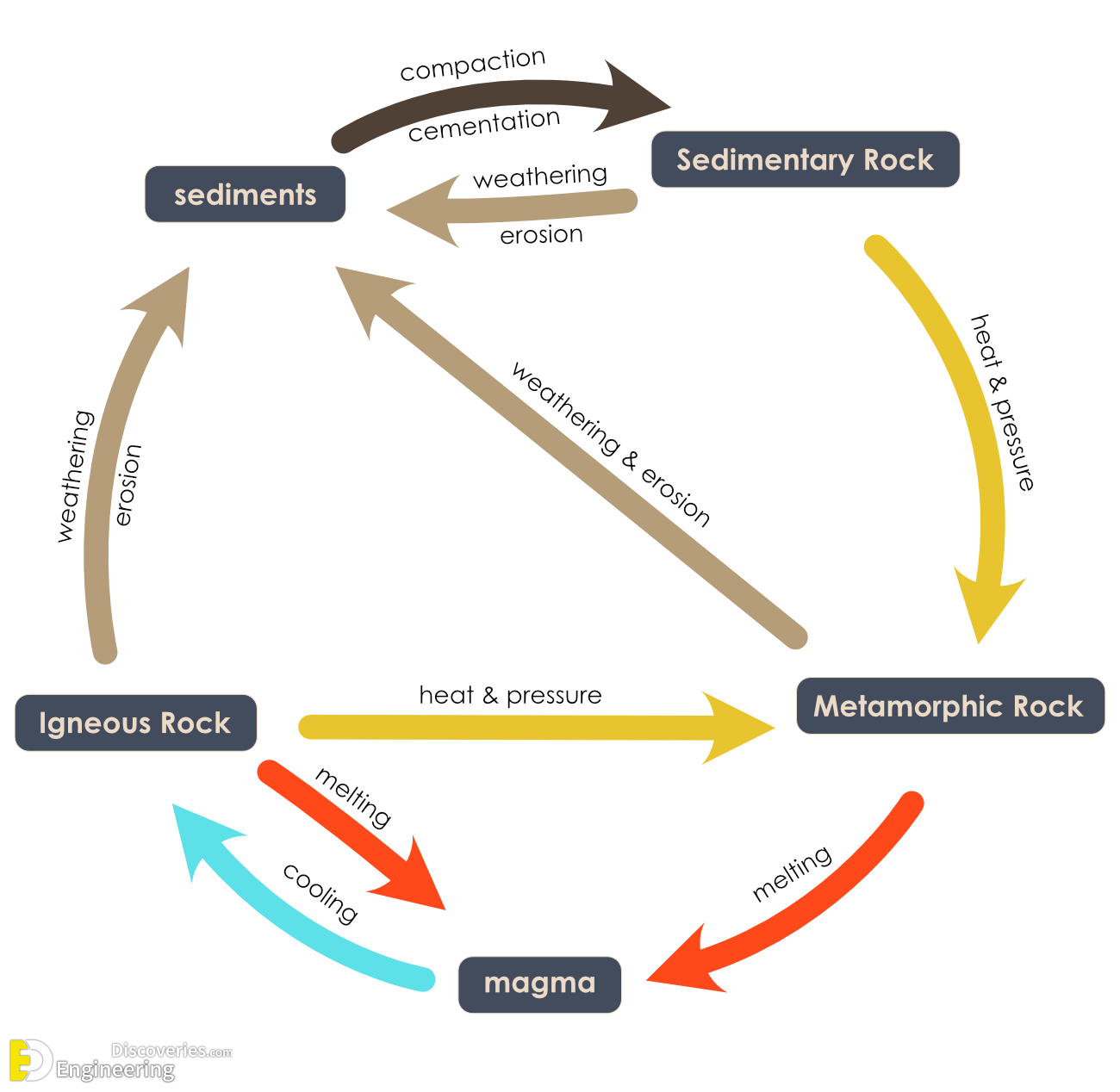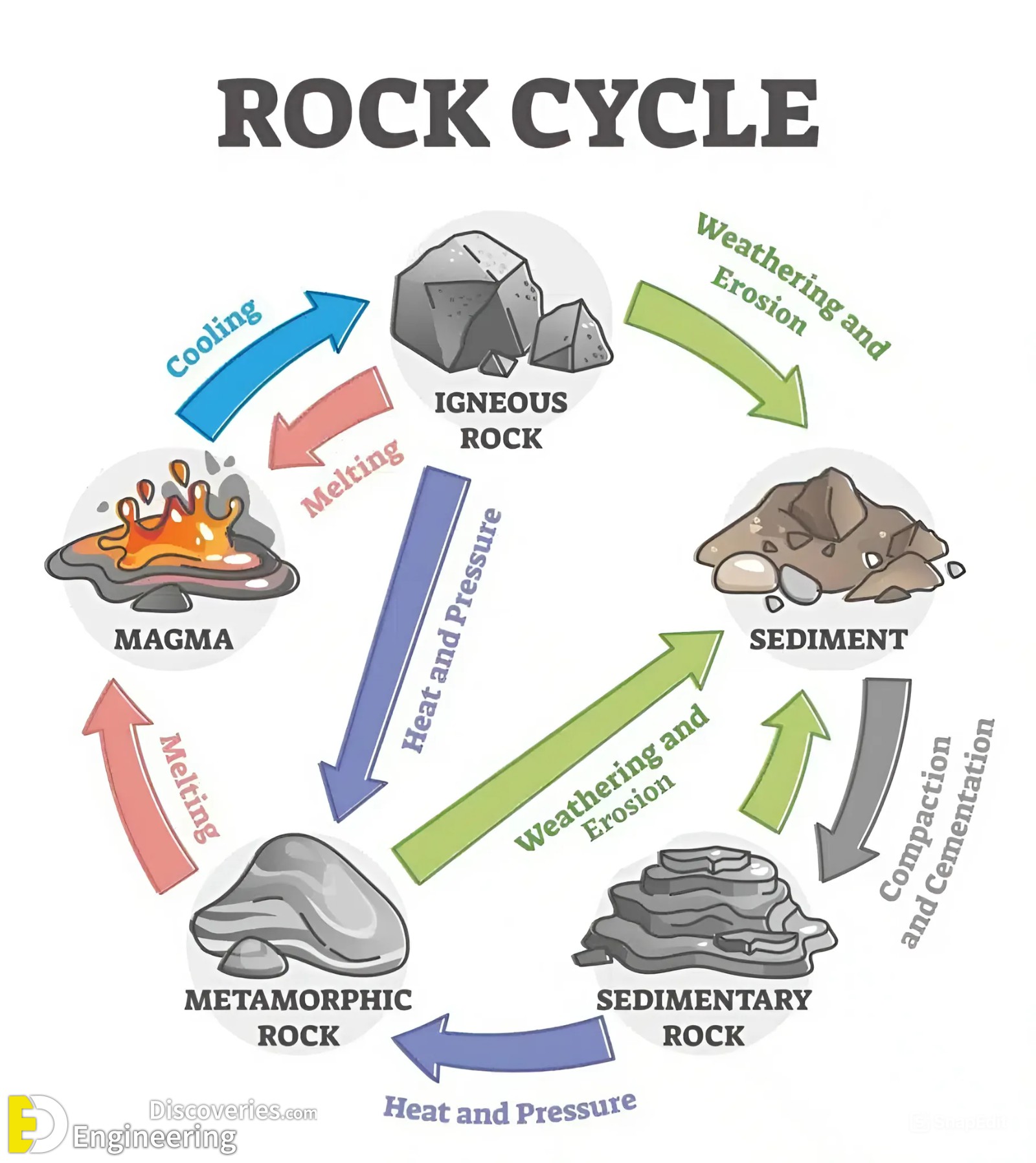What is the Rock Cycle?
The rock cycle is a continuous process that describes the transformation of rocks between three main types: igneous, sedimentary, and metamorphic. This natural cycle explains the dynamic changes within the Earth’s crust, driven by various geological forces. Understanding the rock cycle is essential to grasp how rocks are formed, altered, and recycled over time.
The Three Main Types of Rocks
1. Igneous Rocks
Igneous rocks are formed from the cooling and solidification of molten rock, or magma. These rocks are typically divided into two categories: intrusive and extrusive. Intrusive igneous rocks, such as granite, form when magma cools slowly beneath the Earth’s surface, allowing large crystals to develop. On the other hand, extrusive igneous rocks, such as basalt, form when magma reaches the Earth’s surface and cools rapidly, resulting in fine-grained textures.
Key Characteristics:
- Formed from solidified magma or lava
- It can be either intrusive or extrusive
- Common examples include granite, basalt, and pumice
2. Sedimentary Rocks
Sedimentary rocks are created through the accumulation and compression of sediments. These sediments are typically fragments of other rocks, minerals, or organic material transported by wind, water, or ice. Over time, the layers of sediment accumulate and undergo compaction and cementation, forming sedimentary rocks such as sandstone, limestone, and shale.
Sedimentary rocks are often distinguished by their layered appearance and can contain fossils, providing valuable insights into Earth’s history.
Key Characteristics:
- Formed from compressed sediments
- Often have a layered structure
- Can contain fossils
- Examples include sandstone, limestone, and shale
3. Metamorphic Rocks
Metamorphic rocks are the result of existing rocks undergoing metamorphism, a process involving intense heat, pressure, or chemically active fluids. This transformation alters the mineral composition and texture of the original rock without melting it completely. Marble and schist are common examples of metamorphic rocks, which have undergone significant changes due to these forces.
Metamorphism can occur due to regional changes, such as tectonic plate movements, or contact changes, where rocks come into contact with magma.
Key Characteristics:
- Formed from pre-existing rocks subjected to heat and pressure
- Can exhibit foliated (layered) or non-foliated textures
- Examples include marble, schist, and slate
Processes of the Rock Cycle
The rock cycle is a dynamic system that constantly recycles rocks through various geological processes. These processes are interconnected and can occur over millions of years. Below are the key stages involved in the rock cycle.
a. Crystallization
Crystallization occurs when molten rock cools and solidifies to form igneous rocks. This can happen both beneath the Earth’s surface (intrusive) and on the surface (extrusive). The cooling rate determines the size of the crystals formed, with slower cooling producing larger crystals.
b. Weathering and Erosion
Weathering is the breakdown of rocks into smaller particles due to exposure to wind, water, ice, and biological activity. There are two types of weathering: mechanical (physical) and chemical. Once weathered, the particles are transported by erosion, which is the movement of these particles by natural forces like wind and water.
c. Sedimentation
As eroded materials are transported, they eventually settle and accumulate in layers. This process, known as sedimentation, occurs in bodies of water such as rivers, lakes, and oceans. Over time, these layers are buried and compressed, forming sedimentary rocks through compaction and cementation.
e. Metamorphism
When sedimentary or igneous rocks are subjected to extreme heat and pressure, they undergo metamorphism. This process changes their mineral composition and structure, transforming them into metamorphic rocks. Metamorphism can occur deep within the Earth’s crust or near tectonic plate boundaries.
f. Melting
If rocks are exposed to temperatures high enough to cause them to melt, they transform into magma. This molten rock can then rise through the Earth’s crust, where it may cool and solidify to form new igneous rocks, thus continuing the cycle.
The Importance of the Rock Cycle
The rock cycle plays a crucial role in shaping the Earth’s surface and maintaining the balance of minerals within the crust. It is responsible for the formation of various landscapes, from mountains to valleys, and contributes to the creation of soil, which is essential for plant life. The continuous recycling of rocks also ensures that valuable minerals are redistributed and made available for future use.
Furthermore, the rock cycle provides insights into Earth’s geological history, helping scientists understand past environmental conditions, tectonic activity, and the development of life on our planet.
Human Impact on the Rock Cycle
While the rock cycle is a natural process, human activities have begun to influence it. Mining, urbanization, and deforestation can accelerate erosion, alter sedimentation patterns, and even trigger metamorphic processes in certain cases. For example, the extraction of minerals from the Earth’s crust can disrupt the natural balance of the rock cycle, leading to long-term environmental consequences.
Climate change is another factor that can affect the rock cycle. As global temperatures rise, weathering rates may increase, leading to more rapid erosion and sedimentation. Changes in precipitation patterns can also alter the distribution of sediments and the formation of sedimentary rocks.
Click Here To See Understanding Centripetal And Centrifugal Force
